- Call us: 01444 237070
- Contact Us
- Stores
- Sign In / Register
-
- Back
- Used Cameras
- Used Accessories
- Used Lenses
- Used Video
- Used Film Equipment
- Used Stock Alert
- Used Blank Test
- Sell or Part Exchange
- Used Clearance
- Recently Added Used Equipment
- Park Picks
- All Used Black Friday Deals
- Faulty
- Trade-In
- Blog
- New in
- Call us
- Contact us
- Stores
- Sign in
- Categories
- Tips & Inspiration
- Reviews
- News
- Events
- Features
- Buying Guides
- Competitions
Canon EOS C400 First Look Review
The launch of the Canon EOS C400 RF Mount Cinema Camera heralds a new era for the EOS cinema camera range, with Canon firmly placing the RF mount at the forefront. Gone are the days of the EF Mount, seen throughout previous generation cameras like the outgoing EOS C500 Mark II, and in come new and updated features for professional filmmakers and cinematographers.
Canon EOS C400 Cinema Camera First Look Video
Our Canon EOS C400 First Look Review explores the key differences between the incoming and outgoing models, and why this is a significant move towards the future for what EOS Cinema users can expect going forward.
So whether you’re considering upgrading from a previous model or simply interested in what the next-generation Cinema range holds, continue reading to find out more about the Canon EOS C400 RF Mount Cinema Camera and the many new and improved features it introduces.
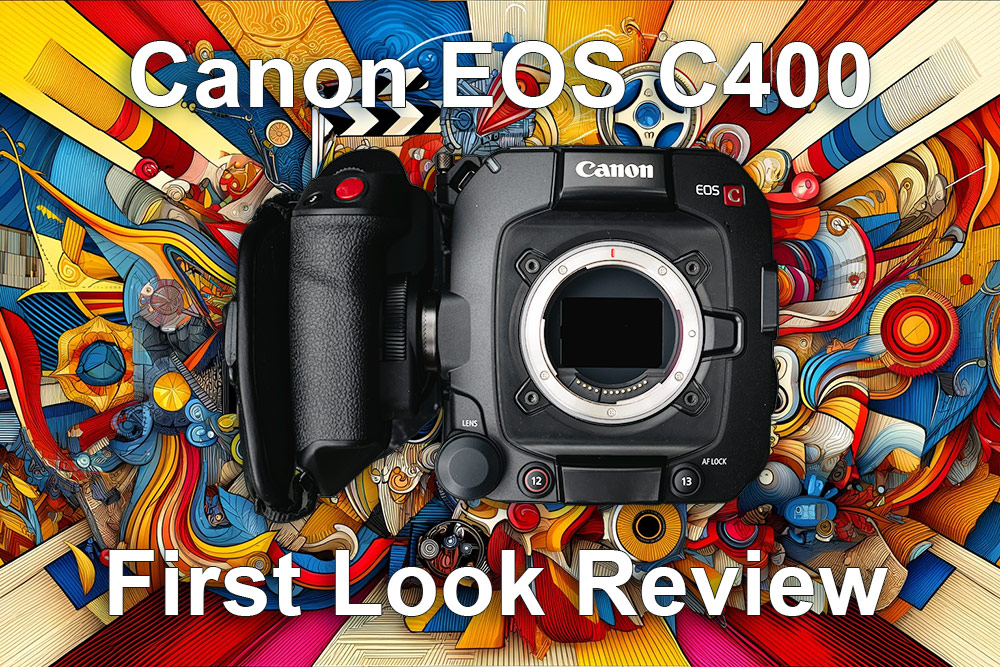
Canon EOS C400 Key Features
Canon EF mount cameras have been the staple for many cinematographers for years, and the new EOS C400 comes packed with technology in a smaller format box-styled cinema EOS camera. This, of course, starts with the addition of the well-established RF mount from Canon, now in its sixth year.
Other key features at a glance include:
- Full-frame 6K BSI sensor with open gate 6K recording
- Capture oversampled 4K/2K in 4:2:2 10-bit without pixel binning
- Canon DIGIC DV7 processor
- 16 stops dynamic range
- Versatile system for handholding, gimbals, shoulder-mounted, and professional drone rigs
- Canon Log 2, Log 3, and RAW shooting
- Dual Pixel CMOS AF II with evolved EOS iTR AF X
- Cutting-edge functionality and improved ergonomics
- CFexpress (Type B) and UHS-II SD card slot
- New MP4 variant file type as well as support for Cinema RAW Light
- Supports next-generation optics with the powerful RF mount
- Supports PL mount lenses including Canon Sumire optics
- EF mount via adapter
- New Manual and Auto Base ISO modes
- Support for live productions via ethernet, DIN, and Tally lamps
- Virtual production support for XR productions with RF 5.2 Dual Fisheye Lens
- New accessory ecosystem and extensive connectivity
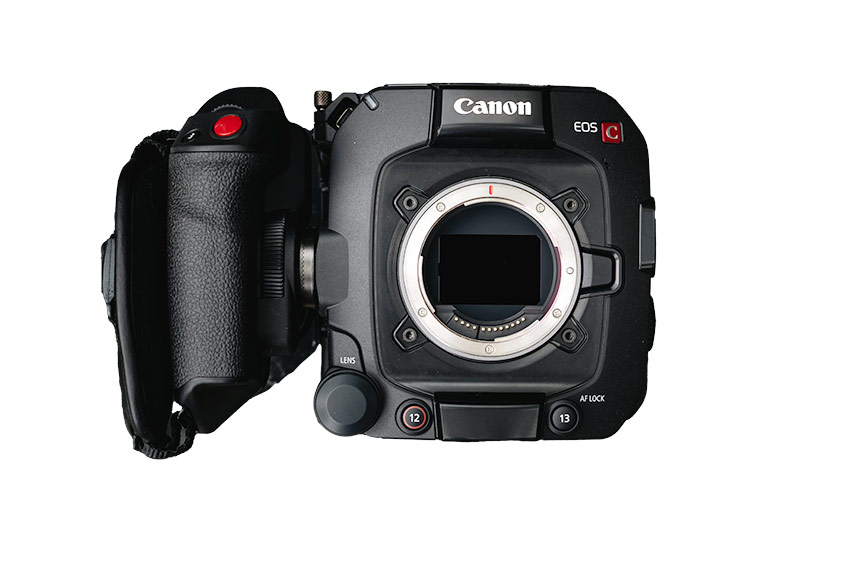
How much does the Canon EOS C400 camera cost?
First introduced on 5th June 2024, the Canon EOS C400 costs £7999.00 including VAT, reflecting its positioning as a thoroughly professional cinema camera. This is highly favourable, considering the technology included, and its expandability, especially when compared with the outgoing EOS C500 Mark II’s RRP of £16,999.
Where does the C400 fit into the EOS Cinema range?
The C400 essentially replaces the C500 Mark II, with updated ergonomics and features, and sits above the full-frame EOS R5 C and the Super 35 EOS C70, both of which include an RF mount within a mirrorless-style camera body.

What is the Canon C400 for?
The C400 is aimed at cinematography, filmmaking, documentary, ENG, live, and virtual content creators who need professional capabilities plus a hand-holdable cinema camera. With the outgoing C500 Mark II Netflix approved, we can also expect the same from the newer C400 RF mount camera, which offers similar professional video quality.
Canon EOS C400 vs. C500 Mark II Comparison Table
The table below showcases some of the most significant specs between the new C400 and C500 Mark II in order for you to glean the differences between these two cinema models.
|
|
||
|
Lens mount |
RF mount |
EF mount (with Cinema lock conversion to PL) |
|
Sensor |
35mm full-frame CMOS Sensor |
35mm full-frame CMOS Sensor |
|
Number of pixels |
Approx. 19.2 megapixels |
Approx. 18.69 megapixels |
|
ISO sensitivity |
160-25600 (Extended: 100-102400) |
160-25600 (Extended: 100-102400) |
|
BASE ISO |
800 / 3200 / 12800 / Auto-change (Ex.: Canon Log 2, Canon Log 3, RAW recording) |
No |
|
Sensor mode |
Full-frame, Super 35mm Crop, Super 16mm Crop |
Full-frame, Super 35mm Crop, Super 16mm Crop |
|
ND Filter |
Mechanical ND filter (2 / 4 / 6 / 8* / 10* stops) *with extender |
Mechanical ND filter (2 / 4 / 6 / 8* / 10* stops) *with extender |
|
Gamma |
Canon Log 2, Canon Log 3, Canon 709, BT.709 Wide DR, BT.709 Standard, PQ, HLG |
Canon Log 2, Canon Log 3, Canon 709, BT.709 Wide DR, BT.709 Standard, PQ, HLG |
|
Frame rate |
6K 59.94P/50P (RAW) 4.3K 59.94P/50P (RAW) 4K 59.94P/50P (RAW/XF-AVC/XF-HEVC S/XF-AVC S) 2K 59.94P/50P (RAW/XF-AVC/XF-HEVC S/XF-AVC S) |
5.9K 59.94P/50P (RAW) 4K 59.94P/50P (RAW/XF-AVC/XF-HEVC S/XF-AVC S) 2K 59.94P/50P (RAW/XF-AVC/XF-HEVC S/XF-AVC S) |
|
Colour space |
Cinema Gamut, BT.2020 Gamut. BT.709 Gamut |
Cinema Gamut, BT.2020 Gamut. BT.709 Gamut |
|
White balance |
Auto, sunlight, tungsten, colour temperature |
Auto, sunlight, tungsten, colour temperature |
|
Dynamic range |
16 stops |
15+ stops |
|
AF |
Dual Pixel CMOS AF II |
Dual Pixel CMOS AF |
|
Recording format |
Cinema RAW Light XF-AVC XF-HEVC S XF-AVC S |
Cinema RAW Light XF-AVC |
|
Maximum frame rate |
|
|
|
Recording format (audio) |
Linear PCM 24-Bit/48kHz/4ch AAC 16-bit/48kHz/2ch |
Linear PCM 24-Bit/48kHz/4ch |
|
Recording media |
CFexpress card Type B SD card |
CFexpress card Type B (2 slots) SD card |
|
LCD monitor |
3.5-inch LCD Approx. 2.76 million dots, touch panel |
4.3-inch LCD Approx. 2.76 million dots, touch panel |
|
Viewfinder |
No |
EVF-V50 and EVF-V70 (available separately) |
|
Multifunction shoe (21 pin) |
Yes (with power contacts) |
No |
|
Wi-Fi |
Internal |
via WFT-E9 (available separately) |
|
SDI out |
Yes |
Yes |
|
Mon. |
Yes |
Yes |
|
HDMI |
Type A |
Type A |
|
Input |
Mini XLR x2 (AES/EBU not supported) |
XLR x2 (AES/EBU supported) |
|
USB |
USB-C for smartphone connection |
Mini for GP-E2 |
|
Video |
USB-C for LCD connection |
Canon proprietary |
|
Grip |
USB-C for grip connection |
Canon proprietary |
|
Mic |
3.5mm stereo mini jack |
3.5mm stereo mini jack |
|
Headphone |
Yes, stereo |
Yes, stereo |
|
Remote A (2.5mm) |
Yes (remote terminal) |
Yes (remote terminal) |
|
Remote B (RS-422) |
No |
With EU-V1/EU-V2/EU-V3 |
|
TC |
Yes (DIN terminal) |
Yes (BNC terminal) |
|
G-Lock |
Yes (DIN terminal) |
With EU-V1/EU-V2 |
|
SYNC |
Yes (DIN terminal) |
With EU-V1/EU-V2 |
|
RET |
Yes (DIN terminal) |
With EU-V3 |
|
DC-In 12V |
XLR (4-Pin) |
XLR (4-Pin) |
|
Battery |
||
|
Dimensions |
Approx. 142 x 135 x 135mm |
Approx. 153 x 148 x 168mm |
|
Main body weight |
Approx. 1550g |
Approx. 1750g |
We can see that the key difference between these two models is, of course, the lens mount; however, it’s also smaller and lighter with more contemporary and streamlined connectivity. Going further, and we see that C400 introduces a new Base ISO feature, Canon’s very latest autofocus system, and new recording formats to streamline your workflow.
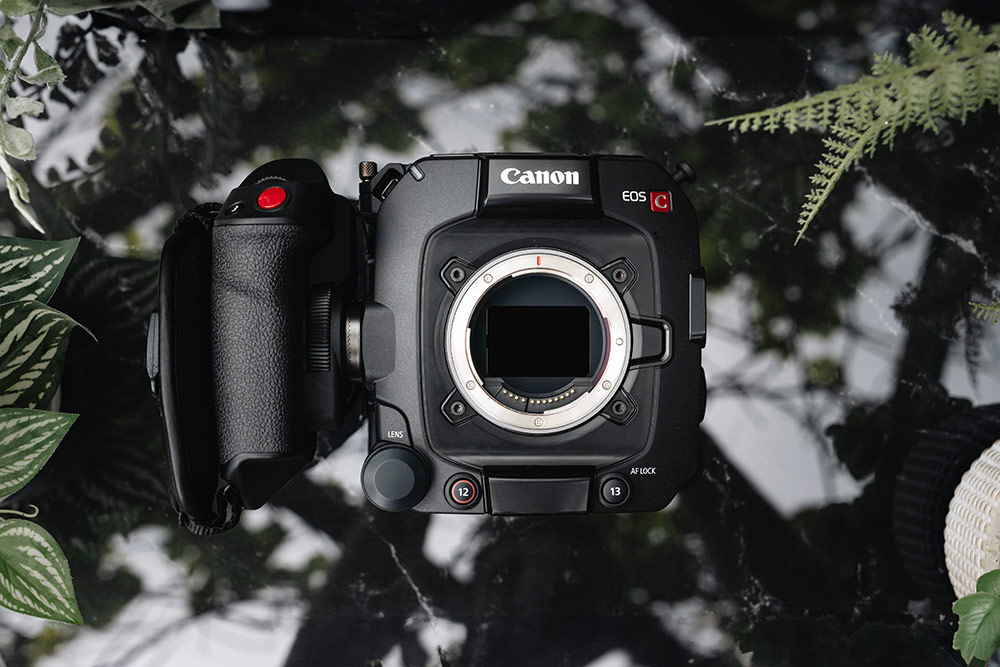
Advantages of the RF mount for filmmaking
Canon’s newer RF mount has been integrated into the professional cinema camera to provide support for newer RF mount lenses, which allow for real-time frame-by-frame data capture, a more compact camera body, and support for hybrid lenses. Support for legacy lenses is also available via an EF mount converter.
Canon mirrorless lenses combine lightweight portability with high-quality optics, which outperform EF lenses and enable Canon to revolutionise cinema optics with RF mount models like the hybrid RF 24-105mm F/2.8 L IS USM Z Lens and RF 35mm f/1.4L VCM Lens. This offers focus breathing correction, lens metadata, and an electronic parfocal design, as well as an 11-bladed circular aperture plus 32 stepless adjustments and an iris lock switch. These alone showcase some of the advantages of the RF mount for professional filmmaking.
Along with RF lens support, the C400 provides the latest in autofocus technology, as well as support for combined lens and electronic IS where available, for more stable footage.
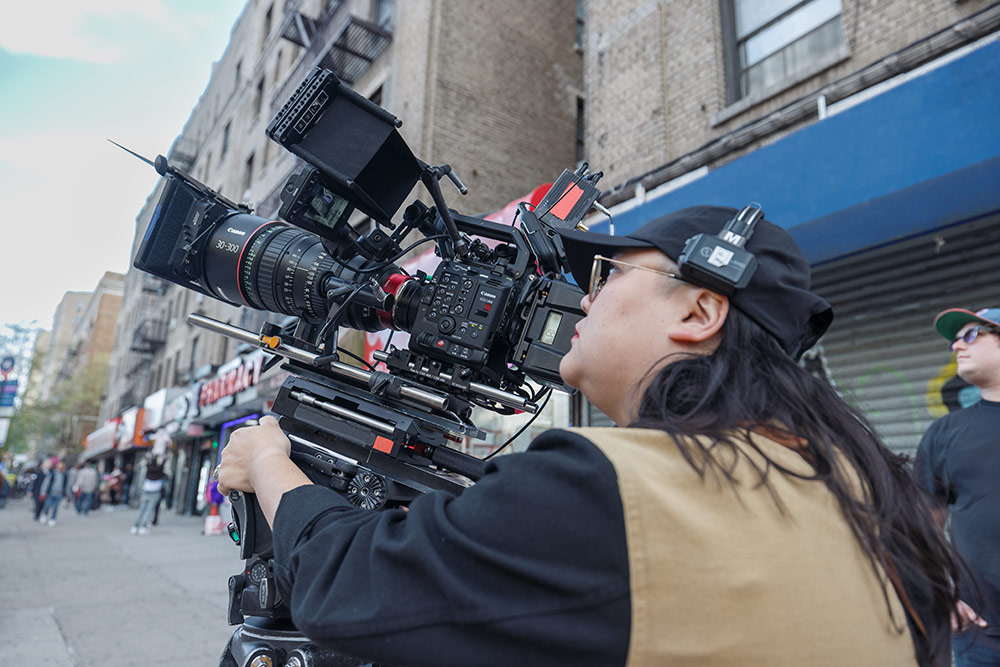
Image Quality
A full-frame 35mm BSI sensor provides filmmakers with a 6K recording solution, as well as S35 / S16 crop recording. Canon’s BSI technology also provides increased dynamic range (16 stops), triple base ISO, faster sensor readout for reduced rolling shutter. Improved AF and better low-light performance are also noticeable.
Users can record 4K/2K at 4:2:2 10-bit resolution, which is oversampled from the full-frame 6K sensor, without pixel binning. Image quality is further enhanced by effective Electronic IS, which is combined with lens-based OIS to provide a more powerful stabilisation effect.
Canon C400 Autofocus Technology
The Canon C400 introduces Dual Pixel CMOS AF II with EOS iTR AF X to the Cinema line, providing filmmakers with advanced AF features including full sensor coverage, faster and more accurate AF performance, new subject detection capabilities, and more detailed AF speed plus response settings. Dual Pixel CMOS AF II works in tandem with the EOS iTR AF subject detection and tracking system, which is tried-and-tested in mirrorless cameras such as the EOS R5 and R6 II camera. These models highlight the benefits of having 100% AF coverage, enabling significantly easier framing, improved tracking, and greater accuracy for subjects moving about the screen or standing off-centre. Thanks to Dual Pixel AF II, all pixels on the image sensor can perform both phase detection and imaging, which paves the way for faster and more reliable AF compared to conventional AF.
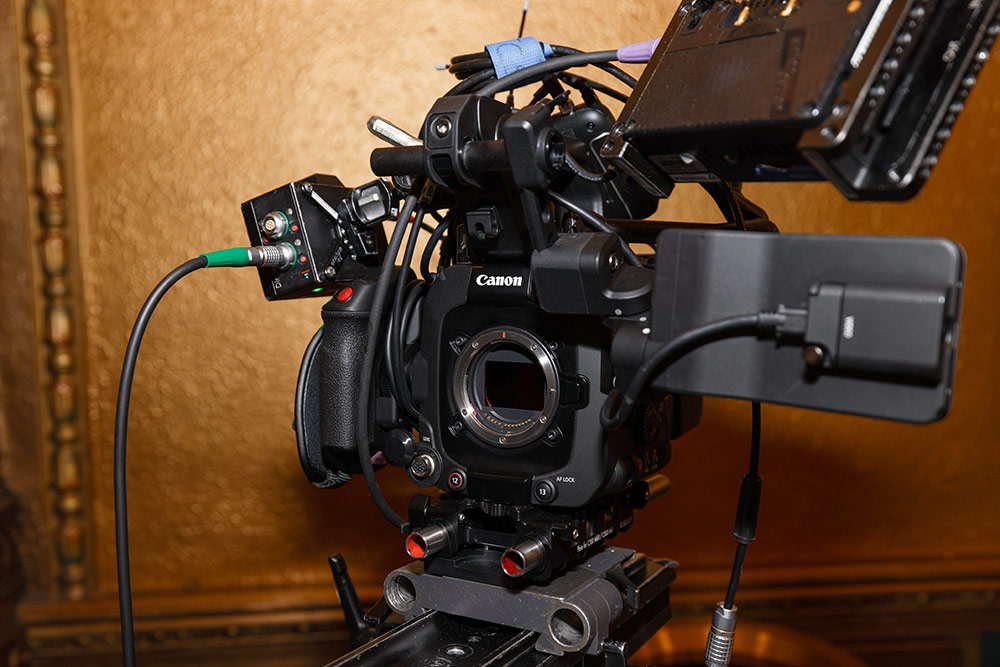
Benefits of the new XF-AVC S and XF-HEVC S formats
Canon's new XF-AVC S and XF-HEVC S bring noticeable improvements to MP4 recording by integrating professional-grade filenames, folder organisation, and metadata acquisition, mirroring the standards set by CRL and XF-AVC. These formats are included in addition to support for Cinema RAW Light and XF-AVC. Key benefits of XF-AVC S and XF-HEVC S include:
- Filenames now incorporate additional details such as Camera index, Reel number, Clip number, etc.
- The main and MP4 proxy files maintain the same filename structure.
- Critical frame metadata like position, Gyro data, etc., is preserved, facilitating seamless integration into post-production workflows.
- Utilising XF-AVC S or XF-HEVC S allows for the adoption of a folder structure similar to Cinema RAW Light, ensuring uniformity across different video formats for greater efficiency.
Design and Connectivity
At its core, the EOS C400 cinema camera features a more compact design, which is slightly lighter and offers improved ergonomics with adaptable connectivity. The multifunction accessory shoe provides direct power for the Canon DM-E1D microphone, Tascam CA-XLR2d XLR Microphone Adapter, and many more accessories, and connectivity includes support for multi-camera productions.
The Canon EOS C400 also supports remote control for broadcasting, events, and more through an onboard ethernet port plus WiFi and wireless control. The XC protocol is supported through Ethernet, and WiFi for camera control, image display, and information, batch control, and more.
Canon’s multi-camera control app streamlines multi-camera workflows by enabling camera status monitoring, simultaneous control, and live view adjustments to be made simply with an iPhone.
The EOS C400 offers more future-proof connectivity than its predecessor for a range of professional content applications, whether ENG, live events, or for virtual productions.
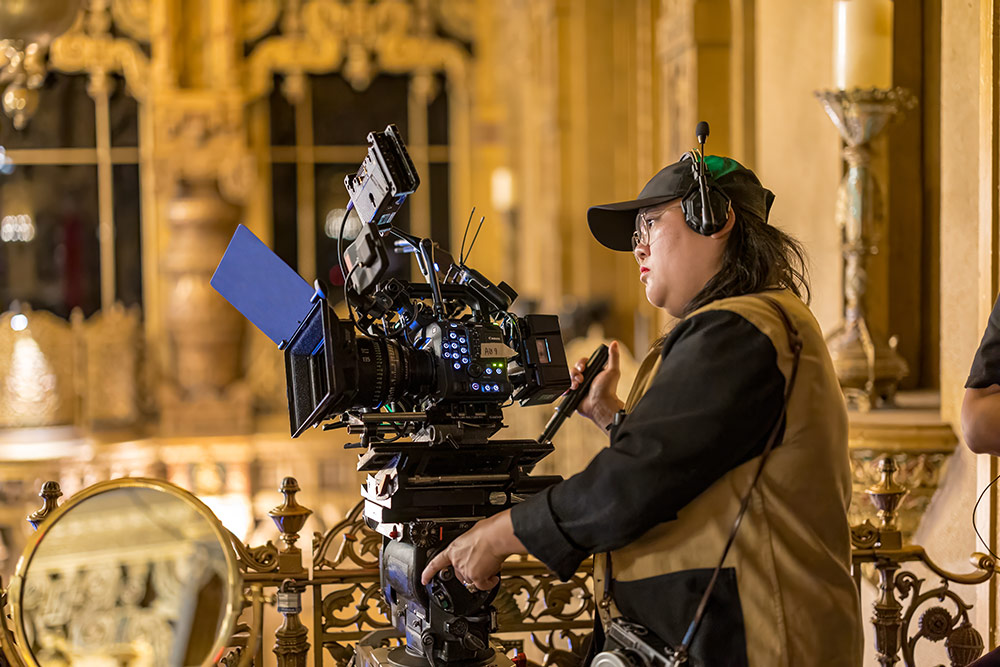
Accessories
Along with the camera body are a new range of accessories developed to enhance the user experience and improve productivity. New C400 accessories include a more versatile LCD bracket, advanced top handle, and new hand grip. An off-camera OC-E4A shoe cord enables off-camera use of shoe accessories.
Conclusion
Through the adoption of the RF mount, Canon is notifying EOS Cinema users that the times they are a-changin’ as the newer lens mount offers significant advantages, many of which are apparent in the EOS C400.
It doesn’t only arrive with the RF mount, but adds new file formats, improved ergonomics, and a smaller and lighter design. Refined for mirrorless cameras, the latest AF system is now available for Cinema EOS, along with 4K, which is oversampled from the full-frame 6K sensor.
Workflows can be more streamlined thanks to support for longer filenames, metadata capture, and numerous other advantages which this camera facilitates, ensuring Canon users stay at the cutting edge of professional video content creation.
If you’ve got an older cinema camera, EF lenses, and other unwanted equipment why not grab a fast and free quote to trade-in or part exchange and we’ll ensure the entire upgrade process is as smooth as possible. You can also speak to our dedicated corporate sales team who are happy to help with business enquiries.
Share this post:
By Nick Dautlich on 05/06/2024
Nick Dautlich
Senior Content Writer and Product Reviewer
Nick Dautlich is the Senior Content Writer and Product Reviewer at Park Cameras, with over 15 years of photography experience. A Sony Imaging Professional and expert reviewer, Nick has worked with major brands such as Canon, Sony and Nikon. His work is also featured on Vanguard World UK’s website, Capture Landscapes, and Shutter Evolve. Nick’s photography includes National Trust projects and magazine covers and he is passionate about landscapes and storytelling. Nick also enjoys hiking and teaching his children about nature. Learn more on his profile page.

Trade in your old equipment
Fast and easy trade in service ensures your old gear is collected efficiently and you are paid quickly! It's very simple to trade in your unwanted photography gear. Just head over to our dedicated Sell or Part Exchange page, fill out the details, and we'll get back to you with an offer for your old gear. Take the cash, or put it towards the cost of your new gear. It's up to you! Find out more
sign up to the newsletter
Keep up to date on the latest photography news, events and offers. Sign up now
